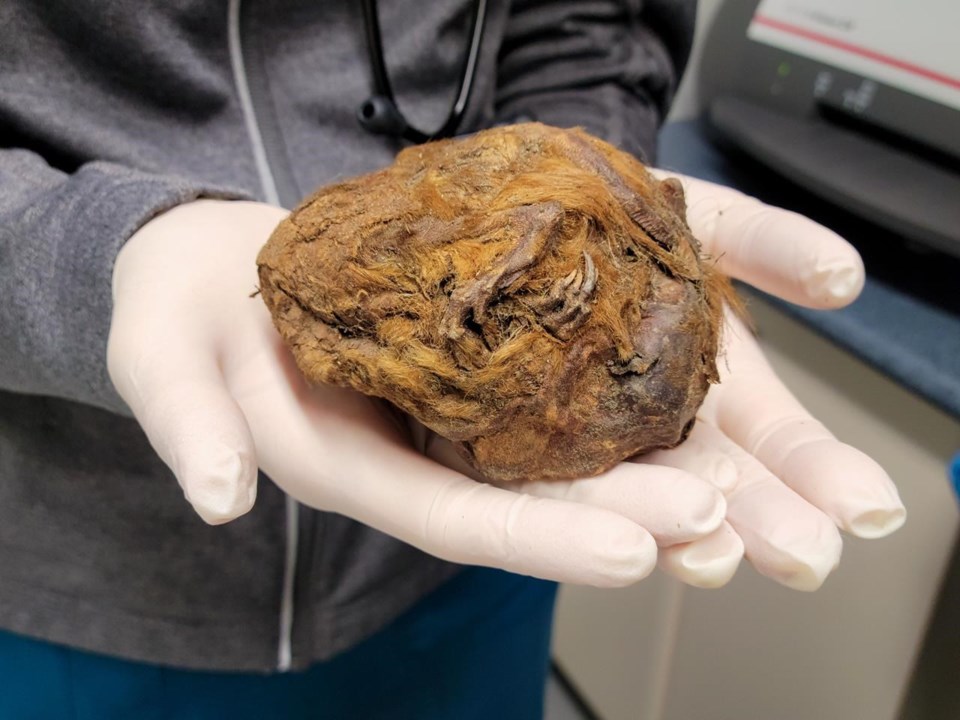WHITEHORSE — The ancient remains of a ground squirrel dug up by miners near Dawson City, Yukon, still has lessons to teach 30,000 years after it died, an expert says.
At first glance, the small, brown discovery looks more like a wrinkly leather ball than a rare archeological find, though a more careful look reveals hair, tiny ears and claws.
It was only with X-rays taken at a Whitehorse veterinarian's office that the discovery of a complete mummified animal was confirmed, said Yukon paleontologist Grant Zazula.
"Arctic ground squirrels are tiny of course, it's curled up in a ball, so just by looking at it it's hard to tell what it is," he said.
"But then, when you see the X-ray, you can see this curled-up skeleton, and the head, and the leg bones, and whatnot, and the tail, all curled up together and it looks amazing under the X-ray."
The remains, believed to be an animal that died while hibernating, were found several years ago by miners at Hester Creek near Dawson City. The palm-size discovery will be unveiled to the public next month at the reopening of the Yukon Beringia Interpretive Centre in Whitehorse following renovations.
Zazula said he first became fascinated with ancient Arctic ground squirrels while examining their nests, hundreds of which have been found preserved in northern permafrost.
Looking at the construction of those nests, which resemble small balls of hay, paleontologists have been able to identify the ice age plants, leaves and seeds living in Beringia — the land mass that once connected North America to Russia.
While nests are more common, the Hester Creek find is one of only a handful of mummified squirrels to be uncovered, Zazula said.
Examples exist in the Canadian Museum of Nature in Ottawa and at the American Museum of Natural History. Others were found in the 1940s by prisoners working in the gulags, or Soviet labour camps, in Siberia.
Mummified remains provide a clearer picture than fossils of bones of what an ancient animal looked like when it was alive, Zazula said.
"The real value of them is really educational, because they really bring forward this ancient ice-age world," he said.
"Looking at bones is one thing, it's neat to look at bones, but seeing the mummified version of those animals from the past, just brings it to life."
Zazula, who completed his PhD on the squirrels, said the animals are especially interesting to study because they survived for millions of years through the ice age and can provide information about howmodern ground squirrels that live in Yukon now may be affected by climate change.
"Many of the ice age animals went extinct or just don't live in the Yukon anymore. So, Yukon Arctic ground squirrels are this amazing story of survival through change," he said.
"They've been around for a couple of million years, they've adapted to all these permanent, really pronounced changes and climates and environment, and they're still with us today."
This report by The Canadian Press was first published April 5, 2023.
The Canadian Press



